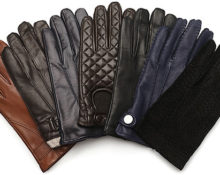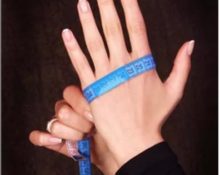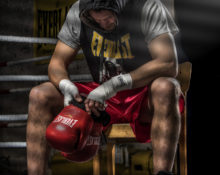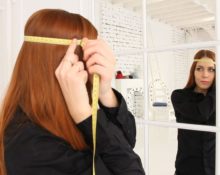A goalkeeper's equipment must be excellent at absorbing impacts. Otherwise, the goalkeeper will not only not be able to play the game normally, but will also be seriously injured during the game. Moreover, the level of protection does not always directly depend on the material and the presence of additional inserts. A very important role is played by the degree of fit and compliance of the pair with the actual size of the athlete’s hand. Learning to correctly determine size is the first step towards winning in the football field.
What should goalie gloves be like?
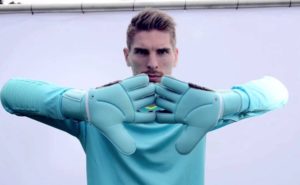 Professional or simply experienced players have more than one pair. For training, they have several simple functional but durable products, adapted for various types of surfaces and weather conditions. Gloves for important games and training camps are much more complex in terms of “filling”, and are also much more expensive than training gloves. Athletes treat them very carefully.
Professional or simply experienced players have more than one pair. For training, they have several simple functional but durable products, adapted for various types of surfaces and weather conditions. Gloves for important games and training camps are much more complex in terms of “filling”, and are also much more expensive than training gloves. Athletes treat them very carefully.
Ideal goalkeeper equipment meets the following criteria:
- does not interfere with the “work” of the hands, does not reduce their flexibility and dexterity;
- facilitates the reflection and capture of the sword;
- dampens the force of impact;
- protects fingers from injury;
- protects the hand and wrists from injury;
- well fixed on the hand;
- does not cause irritation;
- does not increase sweating;
- takes into account the type of surface of the playing field (the value of the property is revealed when the player falls and slides along the surface).
Important! To work in the gym, you need to purchase gloves with ventilation holes or inserts. Moreover, the worse the technique of playing the game, the better the ventilation system of the equipment should be developed.
Most of the qualities listed can only be found in gloves of the correct size. Wherein The universal rule, according to which the goalkeeper’s main game accessory should fit the skin and literally become the goalkeeper’s second skin, does not work for everyone. Some athletes prefer gloves that fit a little looser. Others like it tighter.
In other words, the classic recommendations should be followed only at the beginning of your gaming journey, when you have not yet been able to determine the requirements for gloves from personal experience. And even then only when products of a certain type of cut are purchased. Some models normally have a very loose fit.
How to choose a glove size?
When trying on, pay attention to the length of the finger sections. The pads and nail part should not rest against the walls of the glove. If this happens, the size is incorrect.
Choosing a cut
Goalkeeper gloves consist of 2 key parts: the palm and the back. They are often made of different materials, due to the difference in their functions and tasks.To determine exactly what material and cut is required, study all the options on the market.
Important! Consider the thickness of your palm. A soft palm absorbs poorly, a dense palm feels the ball worse. The optimal wall thickness for players who do not have major challenges is 3–4 mm.
Useful notes and explanations on the cut:
 the design of the gloves must correspond to the playing surface, weather, and professional level of the athlete;
the design of the gloves must correspond to the playing surface, weather, and professional level of the athlete;- seams can be internal or external;
- if plates are sewn into the finger compartments, then the model has high protective characteristics and allows you to catch and return balls thrown with great force without health consequences;
- gloves with high protection are usually used in training, less often in games;
- models with high protection (equipped with plastic inserts) need to be purchased 0.5-1 size larger than their standard size;
- classic or flat cut gloves contain 1 layer of foam, they have external seams, they are rectangular in shape and, if chosen correctly, fit a little loosely;
- The design of contour gloves is called rolled due to a very tight fit to the hand, a large contact surface with the ball and seams that follow the contours of the fingers;
- the seams are hidden when sewing backwards;
- gloves with a reverse cut are usually chosen by female and male goalkeepers with small hands;
- hybrid ones combine the features of several types of gloves;
- usually hybrid ones simultaneously have the features of a pair of contour and flat type or contour and reverse.
Important! If you select gloves marked “Negative”, add 0.5 to your actual size.
“Correct” grip
The reliable palm part allows the goalkeeper to unleash his playing potential and also provides him with the appropriate level of safety. This side of the glove is considered good if it:
- does not reduce finger dexterity and palm flexibility;
- holds the ball well;
- It is characterized by strength and wear resistance.
If you need a hint on how to determine the level of a pair, then take a closer look at the price. Manufacturers of expensive products often rely on grip at the expense of wear resistance, while manufacturers of cheap products rely on resistance to mechanical damage.
Important! It is more convenient to catch the ball with gloves with a corrugated surface and latex inserts.
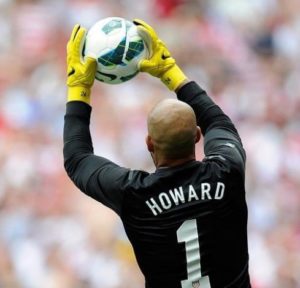 The second decisive point is the softness of the palm. The more pronounced this quality is, the better the fixation, but the shorter the service life of the product. A rough pair will last longer, but at the same time it is more difficult to control the hand, which directly affects the grip. Typically, such gloves are purchased not for playing on the field or for performances in the cup, but for training and practicing some techniques.
The second decisive point is the softness of the palm. The more pronounced this quality is, the better the fixation, but the shorter the service life of the product. A rough pair will last longer, but at the same time it is more difficult to control the hand, which directly affects the grip. Typically, such gloves are purchased not for playing on the field or for performances in the cup, but for training and practicing some techniques.
The third key point is professional level of the athlete. Beginning players do not have personal equipment; it requires a lot of effort and time to develop it. Constant mistakes, high frequency of training in order to achieve at least something - all this requires durability from the equipment. That is why at first it is difficult to find a better option than inexpensive gloves, the key characteristic of which is wear resistance. The grip in their case fades into the background.
Fourth characteristic: type of playground surface and climate (if we are talking about a football field and not a hall). Specialized products are produced for each option; look for the corresponding inscription on the tag. You shouldn’t ignore the manufacturer’s recommendations regarding the applicability of a particular pair on a particular field.. Reason: coatings put forward unequal requirements for the thickness and anti-slip properties of the palm part of the gloves, and for the overall wear resistance of the product. Using equipment that is inappropriate for the location can result in unnecessary costs and injury.
For practical and accomplished football players who want to avoid unnecessary expenses, it makes sense buy 2 pairs. One must provide unsurpassed hold. Typically, this quality is present in models with special inserts, often latex.
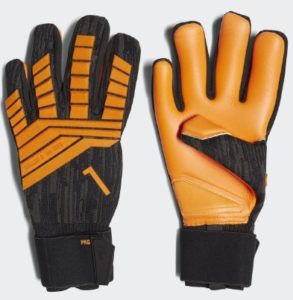 Such products, like all elements of professional equipment for athletes, are not cheap, but they wear out quite quickly. The very first contact with the ball can lead to minor damage, so practicing skills and techniques in such products is pointless. They are only suitable for performances and important games.
Such products, like all elements of professional equipment for athletes, are not cheap, but they wear out quite quickly. The very first contact with the ball can lead to minor damage, so practicing skills and techniques in such products is pointless. They are only suitable for performances and important games.
For training, you should buy a pair that is simpler, but very durable.. Moreover, the higher the goals, the greater the desire to grow in the sports field, the less sophisticated the gloves should be. With their simplicity, they will force you to improve and develop, teach you to rely on your own strengths, and not on the “bells and whistles” of equipment. Progress will go faster, and then, by wearing a pair made from a special material and additionally equipped with inserts, the athlete will be able to show more than if he constantly trained in “smart” gloves.
How to take measurements?
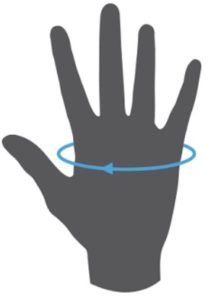 To determine the size, you need to know the circumference of the palm minus the thumb.. The measurement is carried out using a tape. If you don't have it on hand, you can use thread.The difference between the first and second tools is that there is a scale on the measuring tape that allows you to immediately determine the girth without using a ruler.
To determine the size, you need to know the circumference of the palm minus the thumb.. The measurement is carried out using a tape. If you don't have it on hand, you can use thread.The difference between the first and second tools is that there is a scale on the measuring tape that allows you to immediately determine the girth without using a ruler.
To take measurements, you need to lay a thread or tape in a circle between the base of the thumb and the most protruding part of the “rib” of the palm. Write down the resulting value in centimeters on a piece of paper, and then check the entry with the information presented in a special table.
We determine the size according to the table
This table reflects the Russian system of football glove sizes. A similar metric is relevant in some other European countries.

Which material is better?
Rubber gives the palm a rough feel, while latex gives a good grip. Ideally, both surfaces should be present, especially if the match is played on artificial turf. Well, for the inside, latex foam is preferable. In cheap models it is present only in 1 zone; in professional and expensive products it covers most of the pair, but not all. This is due to hygiene reasons. According to them, gloves for frequent wear and prolonged play in dry weather must be equipped with breathable inserts. The part is made of mesh or fabric material.
Important! If you are playing in cold weather, then it makes sense to buy a pair made of wool. In hot conditions, many goalkeepers switch to mesh equipment. Well, when it rains, they often wear vinyl products.
For younger students
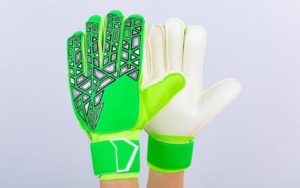 Children's football (we are talking about elementary school, the first steps in the sports field) can be called less traumatic. Cause: very young players are not yet able to send the ball with the force with which adults send it. Due to this, novice goalkeepers and their parents, when choosing equipment for their hands, may not make a decisive bet on protective functions. Instead, they should look for a product that has the following set of qualities:
Children's football (we are talking about elementary school, the first steps in the sports field) can be called less traumatic. Cause: very young players are not yet able to send the ball with the force with which adults send it. Due to this, novice goalkeepers and their parents, when choosing equipment for their hands, may not make a decisive bet on protective functions. Instead, they should look for a product that has the following set of qualities:
- lightness (otherwise your hands will get very tired, besides, heavy gloves do not allow you to feel the ball);
- softness (it allows you to feel the ball better);
- durability (wear resistance will allow you to make mistakes and not worry about the safety of your equipment).
Important! Models with plastic inserts, both solid and segmented, significantly worsen fixation with the ball. A child will not be able to learn to play normally in such equipment. However, a teenager who has already mastered the basics should have such a sports attribute in his arsenal.
Regarding the sizes, everything is simple. Products designed for a girth of 14–21 cm are classified as children's products. In other words, primary school students wear gloves whose size varies from 3 to 7.5. Three are usually bought for first-graders who are 6 or 7 years old. Six - for 10-year-old children. Gloves in sizes 7 and 7.5 are suitable for very tall boys 10–12 years old.
Important! Due to growth spurts, coaches recommend measuring the palm circumference of boys every 2 months. With this approach, it will be possible to promptly change gloves to a new pair and thereby avoid problems with the development of the skeletal system.
For adults
Seven is the smallest adult or semi-adult size. It is usually worn by short and thin athletes with miniature hands, often girls. Nine is for players of average height, and 11 for tall players. Finding a person who fits size 12 is relatively difficult.And such products are not always presented in stores; you will have to make efforts to find a pair for yourself.
Example of choosing goalie gloves
Sequence of steps:
 We place a measuring tape between the thumb and the most protruding part of the palm.
We place a measuring tape between the thumb and the most protruding part of the palm.- Let's find out the girth.
- We check the table and find out the required glove size based on the girth of the palm.
- Let's decide why do you need equipment?. There are separate models for wet weather (they have poor ventilation, so playing them on a regular basis is highly not recommended), a good grip cannot be learned with gloves with protective inserts, and playing on hard ground and artificial grass requires a thick layer of latex and a high rubber content on the palm part. Also worth buying a new pair for every match. In the old ones, going onto the field during an important game is not allowed.
- Based on what equipment you need, we leave the found size or decide to buy a pair 0.5-1 size larger. Protective gloves and models of the “Negative” type require adjustment of the size upward.
- Let's go to the store. Let's try it on.
- We look at the type of hand clamp and whether the fingertips rest against the walls. If they resist, then the pair is not suitable.
- We check the product for breath. All models, except wet weather equipment, must be equipped with breathable inserts. Otherwise, the accessory will become a mini-hand bath.
- Checking the latex. A pair designed for good grip has a latex coating that literally glues the ball to itself.


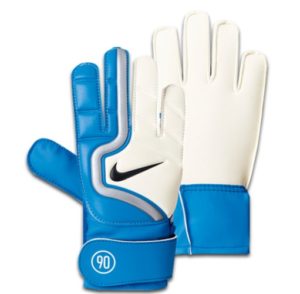 the design of the gloves must correspond to the playing surface, weather, and professional level of the athlete;
the design of the gloves must correspond to the playing surface, weather, and professional level of the athlete;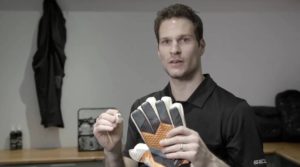 We place a measuring tape between the thumb and the most protruding part of the palm.
We place a measuring tape between the thumb and the most protruding part of the palm. 0
0